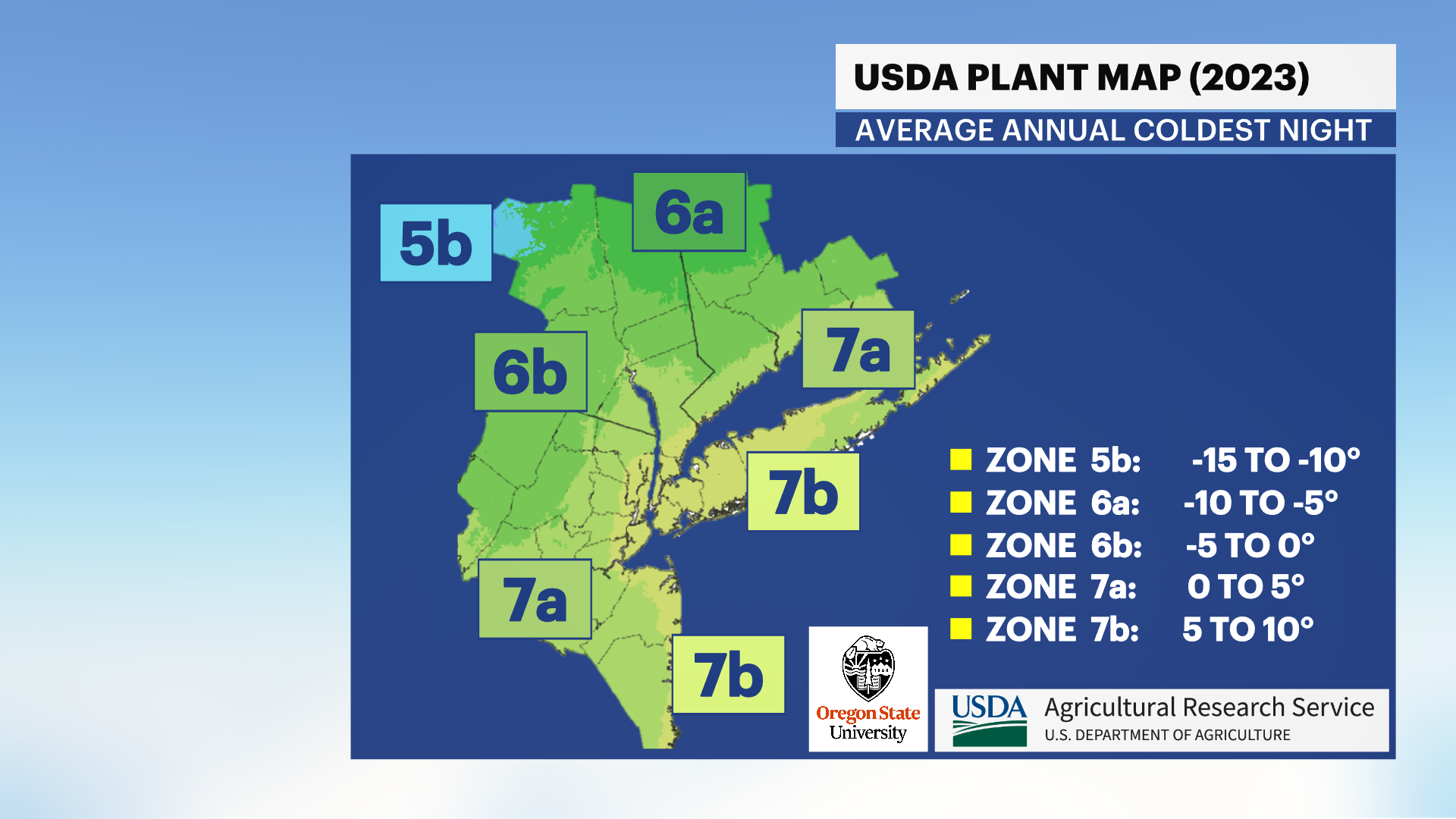More Stories
The USDA’s Plant Hardiness Zone Map divides the country into 13 zones ranging from 1 (the arctic) to 13 (the tropics) to make it easier for gardeners to select plants that can survive the winter in their climate. The numbers are based on 30 years of weather data, and they just underwent a big change.
Gardeners looking to spruce up their landscape may want to select plants that can survive outside for many years. When winter is a hurdle to jump, the USDA plant hardiness zones are a guide. You’ll often find a plant’s “zone rating” on plant tags at your local nursery. This describes a plant’s cold tolerance.

The zone map is updated once every 10 years to reflect changes in climate and most of our area is now considered half a zone warmer. You may find warmer weather landscape plants for sale in local nurseries in 2024 now!
Reading the USDA plant hardiness zone map
The zones determine how cold the typical coldest night of the year gets based on a sliding 30 year average. A zone 1 is the coldest, winter temperatures there can drop to negative 50°F!
Most of the New York City tri-state area falls under a zone 7, which means the coldest night of the year typically falls somewhere between 0°F and 10°F.

North and west of the city, you’ll find much of northwestern New Jersey, the upper Hudson Valley, and northwestern Connecticut under a zone 6, which means the coldest night of the year falls somewhere between negative 10°F and 0°F.
The higher your zone number, the warmer the climate. Florida, for example, mostly falls between zone 9 and 11. The zones are further broken down into “half zones”. Here’s what that looks like here in the tri-state.
Zone 6a (-10°F to -5°F)
Zone 6b (-5°F to 0°F)
Zone 7a (0°F to 5°F)
Zone 7b (5°F to 10°F)

How to use a USDA zone map to select plants
Every plant is given a “zone rating” that defines how cold they’d willing to take. For example, most summer flowers will only survive a winter in zone 11 and up. They look gorgeous here during the warm months but won’t survive winter unless they re-seed themselves. It’s a great guideline, but it only takes into account if the plant can survive the coldest night of your winter.
USDA zones do not take this into account:
How much sun or shade the plant needs
The duration of cold a plant can tolerate
How much heat a plant needs to have a proper season of growth
How much water or dry weather the plants need to survive.
Zone ratings are not perfect. For example, Windmill Palms (Trachycarpus Fortunei) are rated for zone 7b and warmer. Most of the New York City area is a zone 7b, but you won’t find these palm trees growing in most climates because our winters are so much longer than a state like North Carolina where these palm trees would thrive in a zone 7b.
I recommend gardeners select plants that are rated for 1/2 a zone colder than their climate for guaranteed winter cold tolerance in the landscape. Plants left in pots outside over the winter should be rated for 1 full zone colder than your zone. For example, Hardy Camellia are rated for zone 6b or 7a and do well in the ground in much of our area, but may freeze to death in a pot during a cold winter.
I personally have fun experimenting with plants that are up to 1/2 a zone warmer than my zone rating. Some gardens have warm microclimates like southern exposures along the foundation of your house.
My backyard is rated as zone 7b, but I have zone 8 plants like ornamental ginger and palm trees surviving the winter in well protected spots. However, I’ve also lost some plants that are rated for zone 7b because I planted it in a colder part of the yard.
More from News 12
0:30

Bally's Bronx hits the jackpot! Casino license approved for Ferry Point
1:50

Pelham Parkway residents celebrate Hannukah, remember victims of Syndey terror attack
1:51

Exclusive: Bronx woman says thieves caught on camera climbing fire escape to steal from Claremont apartment
0:40

Firefighters battle flames inside Allerton home
2:01

MTA bus crash in Morrisania injures at least 8
1:46
